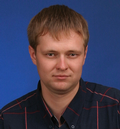Cited By
View all- Hussain YHuang ZZhou YKhan IKhan NAbbas M(2023)Optimized Tokenization Process for Open-Vocabulary Code Completion: An Empirical StudyProceedings of the 27th International Conference on Evaluation and Assessment in Software Engineering10.1145/3593434.3594236(398-405)Online publication date: 14-Jun-2023
- Romano AWang W(2023)Automated WebAssembly Function Purpose Identification With Semantics-Aware AnalysisProceedings of the ACM Web Conference 202310.1145/3543507.3583235(2885-2894)Online publication date: 30-Apr-2023
- Mastropaolo APascarella LGuglielmi ECiniselli MScalabrino SOliveto RBavota GGrundy JPollock LPenta M(2023)On the Robustness of Code Generation Techniques: An Empirical Study on GitHub CopilotProceedings of the 45th International Conference on Software Engineering10.1109/ICSE48619.2023.00181(2149-2160)Online publication date: 14-May-2023
- Show More Cited By


